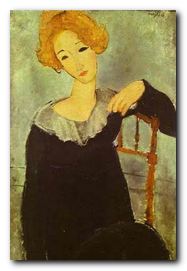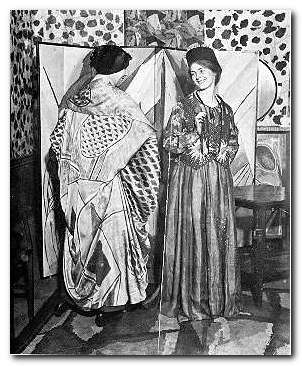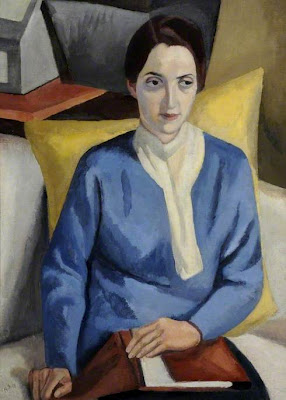alternative lifestyles amongst modernist bohemians
What are Bohemians? Are they people who choose poverty in order to produce works of art – or characters who dress flamboyantly, take drugs, and parade up and down Kings Road in Chelsea, hoping to become famous? Well, it appears it can be either or both of those things – and more besides. Elizabeth Wilson brings together both major and minor bohemian figures from two centuries and both sides of the Atlantic in a scholarly attempt to define the phenomenon. She identifies the key element of Bohemia as a gravitation towards the city, to be free of the constraints of provincial life.
 And she opts for Paris as its true birthplace – despite offering Byron as the first great Bohemian figure, though she does follow him with Arthur Rimbaud and Oscar Wilde who have stronger Parisian connections. Her chapters are built on themes, and the content can be both chronologically lose and geographically disconcerting. One minute it’s the opening night of Alfred Jarry’s scandalous Ubu Roi, next it’s California’s Venice Beach in the 1950s, and then on without pause to Viv Stanshull setting fire to himself in bed in 1995.
And she opts for Paris as its true birthplace – despite offering Byron as the first great Bohemian figure, though she does follow him with Arthur Rimbaud and Oscar Wilde who have stronger Parisian connections. Her chapters are built on themes, and the content can be both chronologically lose and geographically disconcerting. One minute it’s the opening night of Alfred Jarry’s scandalous Ubu Roi, next it’s California’s Venice Beach in the 1950s, and then on without pause to Viv Stanshull setting fire to himself in bed in 1995.
But at least this does have the virtue of suggesting that what she calls Bohemia can exist at any time and in any place. She speaks of it in the past tense, and yet there’s every reason to believe that this sort of world still exists – though as Malcolm Cowley, speaking of Greenwich Village in the 1920s observed, “Bohemia is always yesterday”.
She’s particularly good on the role of women in relation to Bohemianism – whether as muse to a male artist (Elizabeth Siddall, Alma Mahler) or as long-suffering wife-supporter (Dorelia John, Caitlin Thomas). But I think she’s stretching her notion of Bohemia rather for including relatively successful female artists such as Louise Colet and George Sand.
Despite her scholarly approach, her prose style occasionally slides into a poetic mode, as in her comments on the relationship between cafe life and smoking:
To smoke was more than a way of passing the time. It was the classic ‘displacement activity’ which gave coffee drinkers who had long since emptied their cup, lovers who had been stood up, and intellectuals who had lost their ‘circle’ the feeling that they were doing something, had a purpose. I smoke, therefore I am. Smoking orchestrated time, gave it a rhythm, punctuated talk, theatrically mimed masculinity and femininity, was the intellectuals’ essential accessory, and was also an erotic gesture, enhancing the mystery of some unknown drinker seated at her table, veiled in a bluish haze.
Her chapters are packed with interesting characters and rich in social history. She covers the surrealists, Parisian night life, and the cult of negritude in the 1920s, symbolised so magnificently by Josephine Baker.
Yet despite several attempts, she never gets round to defining bohemianism successfully. She simply chains together various types of outsider or larger-than-life figures. Sometimes her subjects are members of a quasi-artistic sub class, but often they are just alcoholics, scroungers, and hangers-on.
There’s a big difference between someone who produces great works of art but dies young (Modigliani) and someone like Marianne Faithful (mentioned more than once) who does very little except take drugs and who is no more than a talent-less has-been, .
Her book could do with a different title. Many of the people she describes were not really bohemian – just famous, dissipated, or so rich they could do as they pleased. Other were neither glamorous nor outcast. Some were fat, ugly, and badly dressed, and others cast themselves out simply by choosing not to work. But it’s a fascinating collection of portraits nevertheless.
© Roy Johnson 2005
Elizabeth Wilson, Bohemians: The Glamorous Outcasts, London: Tauris, 2003, pp.275, ISBN: 1860647820
More on the Bloomsbury Group
More on lifestyle
More on biography
 In 1911 she launched herself into the London art world on the strength of a fifty pound advance on an inheritance from her uncle and a stipend of two shillings and sixpence a week from her aunts. There she socialised in the Cafe Royal with the likes of Augustus John, Walter Sickert, and
In 1911 she launched herself into the London art world on the strength of a fifty pound advance on an inheritance from her uncle and a stipend of two shillings and sixpence a week from her aunts. There she socialised in the Cafe Royal with the likes of Augustus John, Walter Sickert, and 

